Meet the head greenkeeper: Allan Black
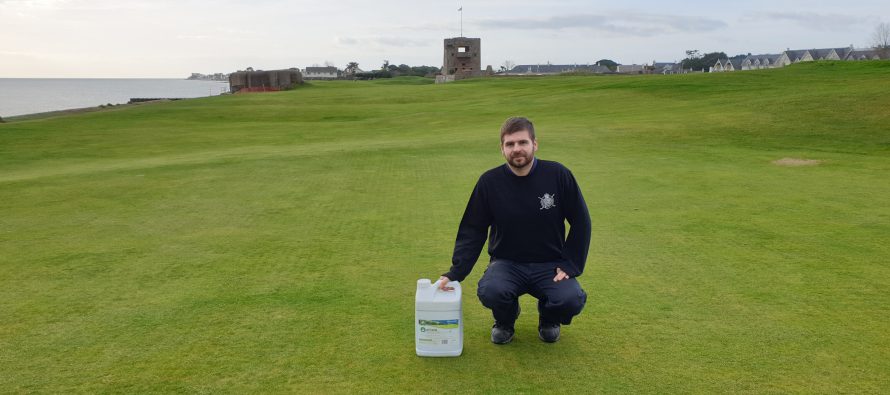
Related Articles
As one of the most southern courses in the UK, Royal Jersey has mild winters ensuring it experiences more than 50,000 rounds per year. GreenKeeping speaks to head greenkeeper, Allan Black, about maintaining such a popular venue, the course’s grass exchange programme, bunker renovation and integrating water management with nutrition conservation.
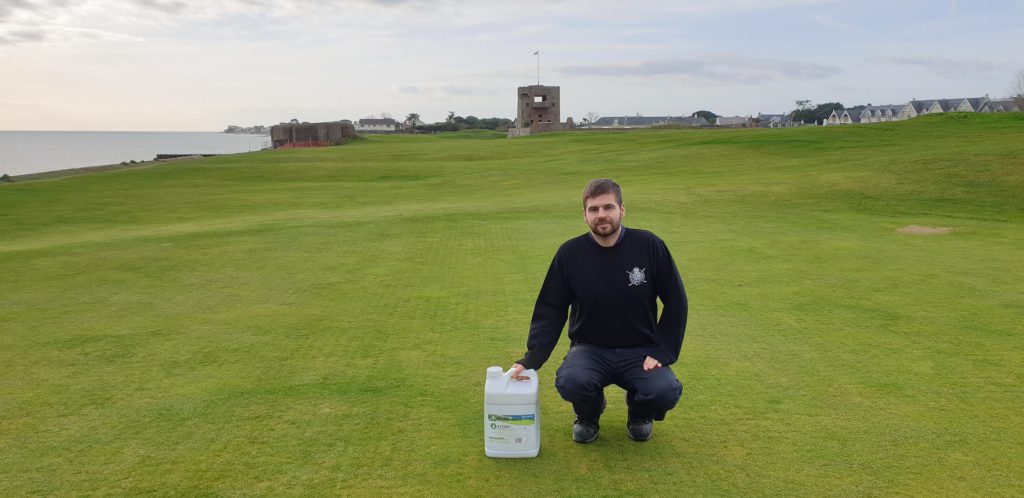
Royal Jersey Golf Club, with views of Mont Orgueil castle and the French coast, has been a major feature in the Channel Islands for 141 years. The club has a rich history – famously under Nazi occupation during World War Two the course was turned into a minefield and the remnants of the German invasion can be seen along the opening hole where two gun emplacements are situated. The island itself has produced a disproportionately high number of leading golfers, including Harry Vardon, Ted Ray, Tony Jacklin and Tommy Horton.
As for the course, at just over 6,100 yards, it’s not especially long but accuracy is essential – there are over 60 bunkers and numerous gorse bushes to avoid. The opening four holes follow the shoreline, while the remainder of the course is more inland, although still within viewing distance of the sea.
GreenKeeping caught up with the club’s new head greenkeeper, Allan Black, to find out about his work and the venue itself.
What was your path to greenkeeping, where did you study and how long have you now been at Royal Jersey GC?
After leaving school aged 17 I went to Elmwood College to study greenkeeping full time. After doing just three months there an apprentice opportunity come up at my home course, Royal Dornoch, which I applied for and was lucky enough to get. I worked there for four years and gained my SVQ level 2 from Elmwood College. My dad was living in Jersey and offered me the chance to move down there and try and get on one of the six golf courses in Jersey but in the mean time I could work with him, labouring for his building firm. After two years of labouring for my dad and sending out numerous CVs to the golf courses in Jersey I finally got an assistant greenkeeper’s job working at a small parkland nine-hole par three course called Wheatlands Golf Club. I stayed there for eight years and really enjoyed my time there – it was a complete contrast from working at Royal Dornoch, which was a championship links course to a parkland course full of trees and only two members of staff with little resources. I then got the opportunity to become assistant greenkeeper at Royal Jersey Golf Club in 2012 and within two years got promoted to deputy head greenkeeper. I held that position until September 1, 2018, when I got the opportunity and honour to become the head greenkeeper at Royal Jersey Golf Club.
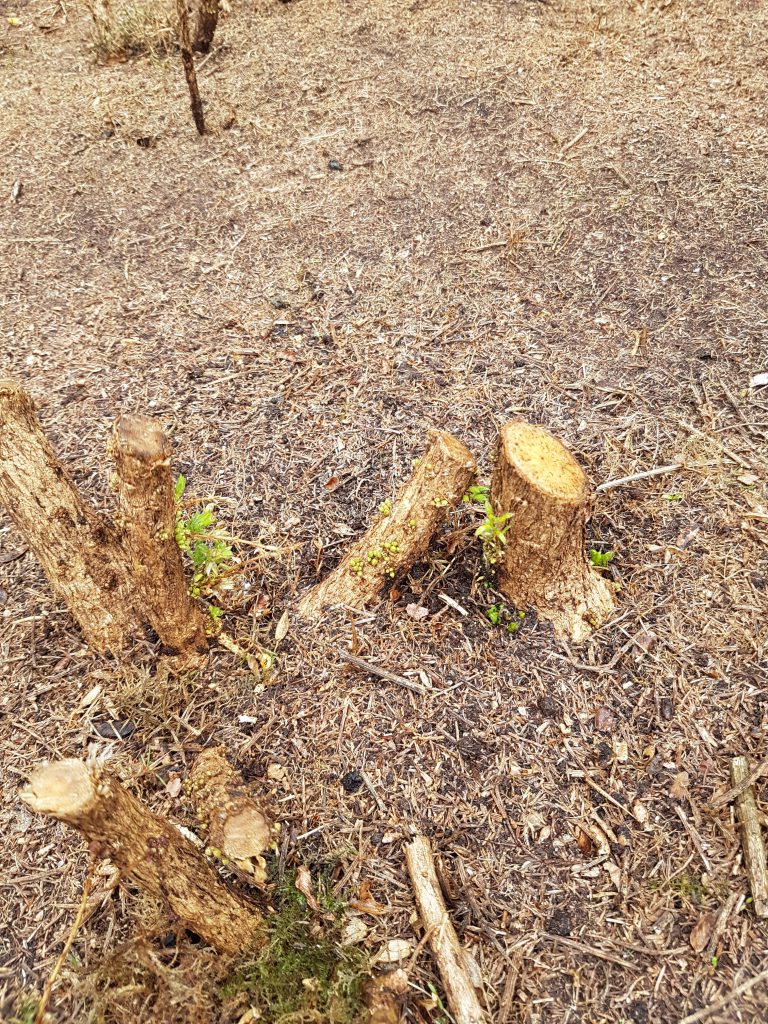
What is the size of your team and does each member have specific tasks?
We are a team of nine. I have two first assistants: Robert Brown and Dave Boyden. Our greenkeeper mechanic is Ali Watts and three assistant greenkeepers each have specific task as well as day-to-day jobs: John Martins (ecology), David Le Monnier (gardens, front of clubhouse and first tee area) and Scott Jehan (gardens). We also have two trainees: Scott Simpson and John Le Cappelain.
What would you say are the biggest challenges you currently face and how does this impact on the daily maintenance?
The biggest challenge we face is the amount of play we receive; it is estimated that we get around 50,000 rounds of golf a year and this is mainly members. We are very fortunate to have a healthy membership which still has a waiting list. We have a two-tee start on the course, the first and 10th tees where golf starts at 7:30am and is busy every day even through the winter (Jersey winters are normally mild so golf continues). This means that we need to be on the ball in our planning of jobs to stay in front and out of the way of golfers as much as we can. When we do any aeration or overseeding we will put a temporary pin on the fairway of the hole we are working on so golf can continue.
You are running a grass exchange programme across the course, what is the reason for this, which particular areas are you focussing on, what improvements have you seen, what cultivars are you using and how have the members found the playing surfaces?
The greens are a mix of fescue bent and, of course, poa. We have been working hard for a few years now on decreasing the poa by introducing and creating an environment for the fescue to thrive – we have done this by reducing our organic matter, reducing the nitrogen and water to the greens and improving the soil health of the greens. This has been a long process and we have had some tough times when the poa was looking weak and causing patches on the greens to look yellow and stressed.The membership did notice this and would ask questions, but in general they were understanding of the process and have been very supportive, and the last two years have seen the greens become more consistent through the season so I am hoping the worst is behind us now. We are starting to see fescue throughout the sward. Even in poa patches we now see the fine leaves of the fescue breaking through, which is a positive sign that we are moving in the right direction.
What aeration and top-dressing programmes do you use across the course, when do you undertake this and how far in advance is your programme planned?
Aeration is booked into the club diary for every six weeks throughout the year where we alternate depths. These range from 14 inches to five inches throughout the season – it is mainly a pencil tine getting to where the roots are. This also means that we have minimal disturbance to the surface.
This year I am introducing a programme I call pocket aeration where we will be focusing on just the high traffic areas on the greens and will tine five greens at a time on a Monday morning before play using the Toro ProCore 648 and a pencil tine for minimal disturbance. We also have aeration programmes for the tees, fairways, approaches and high traffic areas around the course. We are lucky to have a ProCore 648, ProCore SR72 and a Charterhouse Verti-Drain. Topdressing is done fortnightly with around 120 tonnes applied to the greens every year. This year for the first time we will be applying topdressing to the tees with the aim of getting 90 tonnes down, this will help improve the surface of the tees and reduce the high organic matter that we have in our tees.
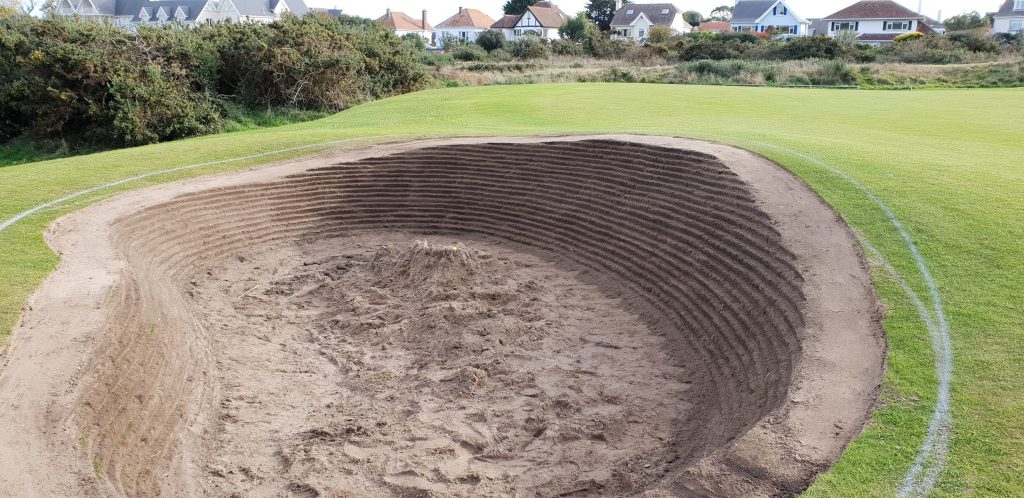
What have you implemented across the course to support the ecology, what unique wildlife does the course play host to and how will you continue to build on supporting these moving forward?
The club works closely with Bob Taylor from STRI and also the Department of the Environment – States of Jersey where we have annual course walks and reports.
The biggest ecology areas on site is the gorse around the course. We have a gorse management plan in place where we coppice areas each year to help rejuvenate that area and not allow the gorse to become too leggy and open that it serves no ecological value for wildlife. We also have a lot of green lizards and slow worms to help protect them – we have built four hibernacula around the course. The biggest one we built is under the fourth tee, this was the first one we did, and it got national TV coverage on The One Show. We also came runners up in the STRI Environment Awards.
The irrigation system was replaced in 2014. Please can you explain your water source, the design of the new system, who installed it, what efficiencies it now delivers across the course and the results you’ve experienced?
The new Rain Bird irrigation system was installed by MJ Abbott in 2014 – that was greens, approaches, fairways, carries and rough, while the tees were installed in-house. It replaced an old plastic pipe system that was causing a lot of man hours throughout the year with burst and leaks. The course gets its water supply from four boreholes on site, which pump 24 cubic meters an hour into our holding tank in the compound that holds 180 cubic metres. The new system has improved our water use as we can now get the water to where we need it. In the past we had a lot of areas throwing on to other areas, we also had areas that were getting hardly any cover and, in the summer, would burn out. Each head has a decoder which means we can set them off individually and have the system linked to my phone so whilst I am out on the course I can set off heads to areas that need it.
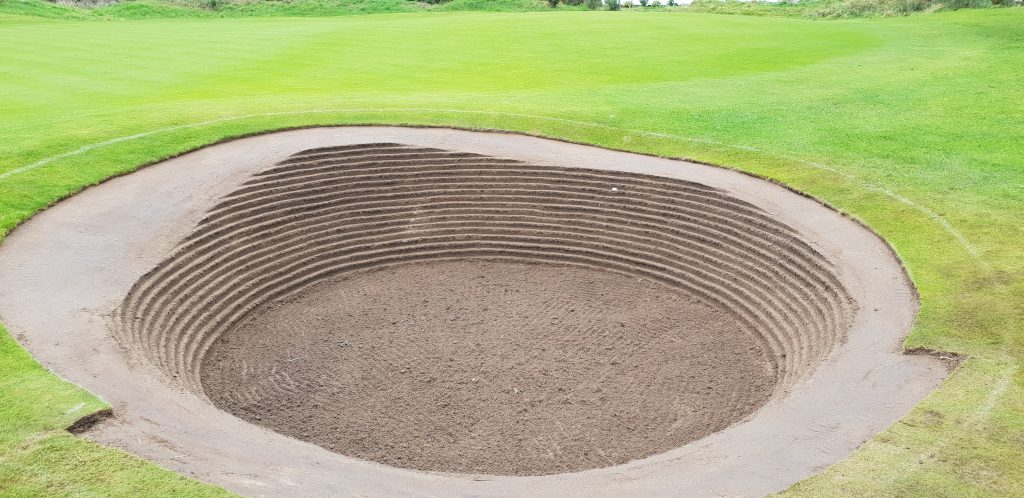
You’ve been running a renovation programme to the bunkers. How many bunkers does the course have, what’s the nature of the work, how long do you think the programme will take and what is the feedback from the members so far?
We have 61 bunkers on the course. When I took over one of the things I was looking to improve was the consistency of the bunkers and I set up a five-year programme to get them all revetted so no bunker on the course will be older than five years. This is quite a challenge as we don’t have a turf nursery on site and cant source revetted turf on the islands. So, we use turf from tees that are due to have new irrigation fitted or are beginning to look uneven, we then level that tee and lay new turf, which is imported from Tillers Turf. This year we revetted 10 bunkers, four of which we used revetted turf from Tillers Turf and have been impressed with it so far. The feedback from the members has been positive and they are all looking forward to them being open at the start of the season.
What are the important aspects of soil health that concern you and how do you tackle these issues within your management programme?
Soil health is important – without it we would struggle to produce the fine turf surfaces we have here at Royal Jersey. Four years ago, the previous course manager, Ben Blampied-Smyth, and me, went to a talk by Elaine Ingram about the soil food web. This really got us thinking about what was going on under the surface. We then took a microscope course taught by one of Elaine’s students and learnt how to identify different micro-organisms that were beneficial to the soil. This led us to testing soils after we applied products to see what effect these had on the soil food web.
By doing this we have now found the products that work for us and don’t have a negative effect on our soil.
What is it about your working relationship with Aquatrols and their distribution channel that you value?
Aquatrols’ rep Peter Lacey is someone I have known for a few years and what I like about Peter is he has great knowledge of greenkeeping, soil biology, grasses and Aquatrols’ products, and is always keen to help with anything. He was previously a course manager and understands what we are trying to do and is really easy to chat to and is a genuine guy. I choose to purchase my inputs from Peter Holmstrom at AGS who also adds value and knowledge to process. Being on an island it can be difficult to get things on time but AGS has never let us down.
How do you integrate your water management and nutrition conservation on the course? Which Aquatrols products do you use and at what rate?
We spray Revolution monthly and tank mix it with Attain. It’s applied with 900 litres of water then we add 4mm of irrigation water straight after if there is no rain. This helps get the products into the soil where the Revolution needs to be to be most effective and within a day or two you start to see the consistency across the greens when taking moisture readings. With other surfactants we have used in the past the readings can be all over the place. Revolution really does do what it says on the tin and is a must-have for us.
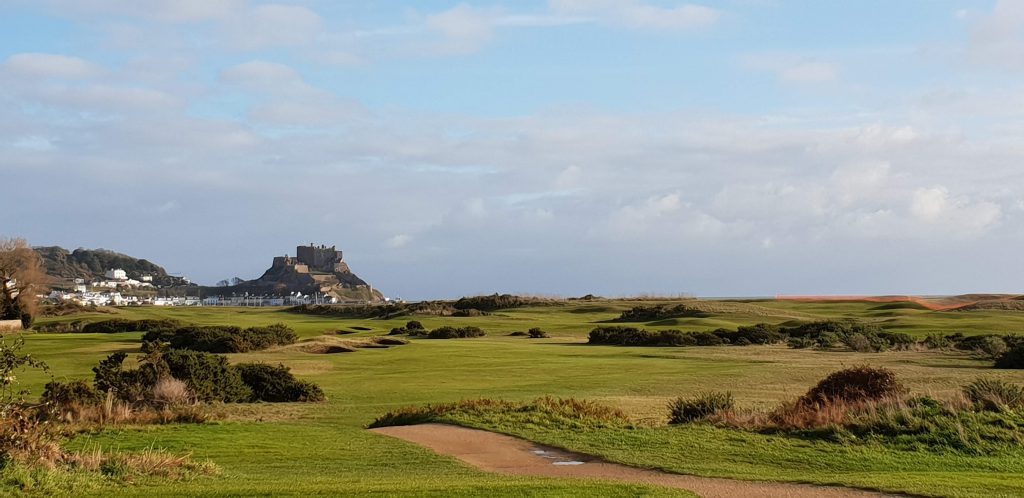
What are the qualities of the Aquatrols’ range of products and how do they add value to your role?
As a result of our soil testing it led us to the Aquatrols’ products we use. Revolution, one of their wetting agents, is a great product that really helps us in our goal of removing poa from the sward as it draws the moisture away from the surface where the poa roots are and down to the deeper roots of the finer grasses. This product was also used in the 2012 London Olympics where they wanted a wetting agent that was soil friendly. Porthcawl was a product we also used as it showed great results in our soil testing and improved our soil biology and had a positive effect on the fescue every time we applied it. The new product Attain has carried on from where Porthcawl left off; once Peter Lacey explained to me the new AquaVita technology that has been used within Attain, and the benefits it has on soil health, it was a must-have for my nutritional programme. The visual results so far have been impressive – the fescue is standing up after an application and looking strong. And the green has a natural look after it has been applied. With the product now being more concentrated it means that instead of the large IBC unit we were having shipped over every year we now get a small 110 litre barrel that takes up less space and costs less to ship. The product has also lost the strong smell that used to linger on you for the whole day.
What do you think are the strengths that have carried you through your career and current position at Royal Jersey and how do you keep the course evolving?
I would say my strength is my passion for the job – even the two years I had away from the job working on the building sites I still tried to keep up-to-date with the industry and what was going on, I never gave up on getting back on to a golf course and knew it was just a matter of time. Another area I am always trying to improve is communication within the club, and team. I am lucky to have inherited an amazing team that are hard-working and understand the way I work and what I and the club expect from them. They also share the passion I have for the job and this shows by the condition of the course. Going forward the mantra really is presentation.
The course has seen several big changes in the past which were needed at the time. This has now come to an end and it is time to take it forward by trying to improve on the high standards of presentation we already have on the course.
What height of cut do you use across the course and what hours do the team work?
Greens are cut at 4mm in the summer and 6mm in the winter. Tees are cut at 13mm all year. Fairways are cut 13mm in summer and 15mm winter. Approaches are 7mm in summer and 9mm winter.
Summer working hours are 6am to 2pm Monday to Friday with two-man teams at weekends doing three and a half hours every third weekend. Winter hours are 6:30am to 2pm Monday to Thursday and 12:30pm on a Friday, and two-man teams at weekends doing two and a half hours every third weekend.
During the summer months we have a lot of shot gun starts where we will be in at 5am to get everything done, and when we have shotguns on the weekends we will be in at 4:30am.
This means that all our kit has lights on; we also have residential areas around the course which means we have to change our route at those times to not disturb anyone.
Training and education are key to developing a good team, what do you do to ensure you are investing in raising the standard of practice and performance of your team members?
The club has always been a big supporter of training staff and that is not just in our department. All the assistant greenkeepers here have done their NVQ level 2 and three of the lads are now in their second year doing their level 3.
One of the trainees has almost finished his level 2 with the other trainee starting his later this year. This training is a must for these guys if they want to progress in the industry and it gives them a great insight to the job. We also do a lot of other off-site courses like first aid, Excavator (180/360), spraying, chainsaw, working at height, manual handling and some health and safety courses. I also try and get the team involved when we have reps over and when STRI do their yearly visit. We try and have a monthly team meeting which is either in the staff room or a course walk, and this is great, so I can get my plans and ideas across but it also gives them a chance to put forward any ideas they have.
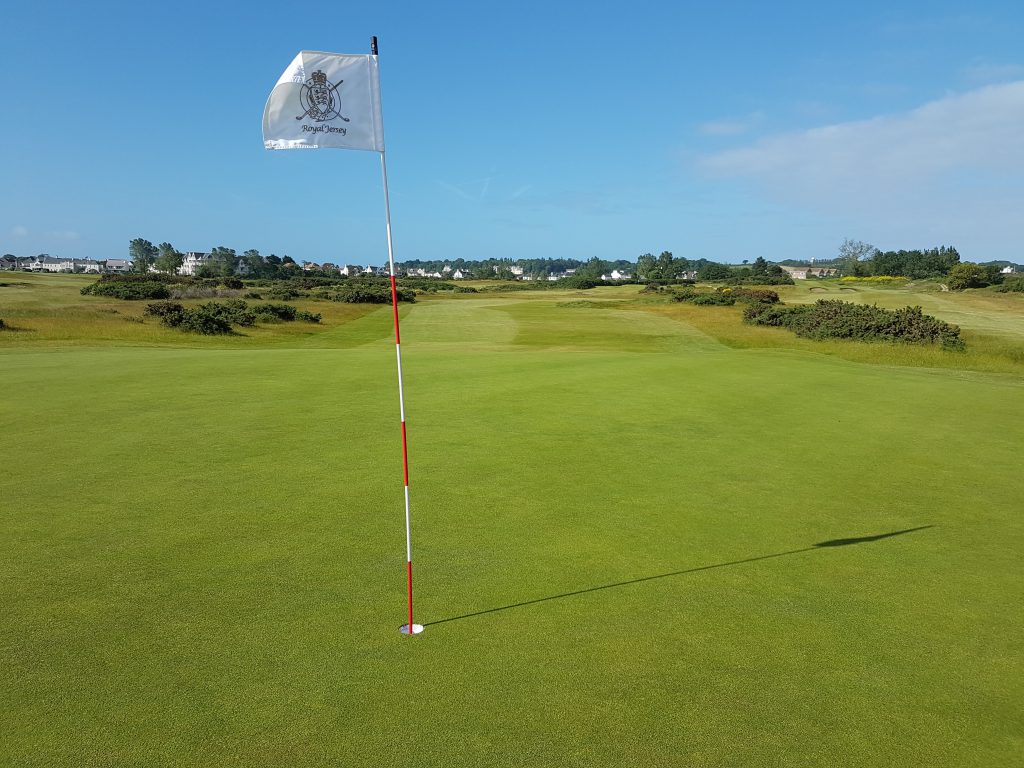
You are a practitioner of sustainability. What are the factors that have caused you to pursue a more sustainable maintenance programme and how has this benefitted the course?
I think the industry as a whole is now looking at becoming more sustainable and with each passing year we are losing more and more of the chemical tools we once had in our armour to attack turf disease and pests. So, we need to look at different ways in which we can solve these problems and, for us, it has been things like improving our water use, lowering our inputs using products like Attain to improve our soil health and introducing more fescue to the greens and discourage the poa as much as we can. I think tougher times are still to come in our job and communication to the membership will become vital and, for us, sustainability across the whole course is a must to make those tough times a bit easier (hopefully).
The pressures on the course manager to deliver a better product are growing year on year and the level of professionalism is rising with this. What do you think are the qualities now needed to meet the requirements and demands of golfers by someone in your position and how does this help contribute to the business of golf?
I think communication by keeping the membership up-to-date with changes in the industry like products being removed and why we do certain practices. Educating the team; I am trying to explain and give the team as much info on things we are doing on a day-to-day basis so they have the answers for the membership. Blogs and social media now are becoming a good tool for educating and communicating with members. Greenkeeper forums are great too as you can see what other guys are up too and ask for advice and our industry is great at helping each other.
What gives you the greatest satisfaction from your job?
The biggest satisfaction for me is presenting the golf course, whether it be for a big competition or for a corporate event. Even though the lead up to it or the morning of the event can be stressful there is no better feeling when it all goes to plan, and everything looks sharp.
Walking around the course daily is the time I think I enjoy the most – I can get a good look at things, make lists and plan the jobs ahead, take moisture readings, speak to the team doing their jobs and talk to the members.
As I have only been head greenkeeper for six months I would have to say our biggest achievement to date was building ten bunkers this winter within two months – granted the weather was on our side but the team really worked hard and to a very high standard to produce some of the best bunkers I have seen built on the course.
With your many years experience, what advice would you give to youngsters starting out and wanting to pursue a career in the profession?
This is something that really concerns me in the industry – the lack of young people taking on apprenticeships. We have had a couple of vacancies in the last few years and have struggled to find apprentices, which I just put down to it being a Jersey thing. But I was talking to several people at BTME who were saying they are having the same problems. So, my advice to any young person looking to get into greenkeeping – take every opportunity you can to learn, look at everything that is going on around the course and ask plenty of questions. Don’t be scared to put forward your ideas. This job is a great opportunity to travel and each course will teach you something new.
What were the benefits of the new BTME layout to you this year and what changes do you think need to be made to benefit the industry sector and profession of the greenkeeper?
Allan Black: I think the new layout was great. The first day took me a little while to get my bearings but it felt like you had more chance to talk to the reps at their stand and weren’t queuing up waiting to catch their attention.
The Continue to Learn was good and organised as always. I really enjoyed it this year and am looking forward to BTME 2020.

























